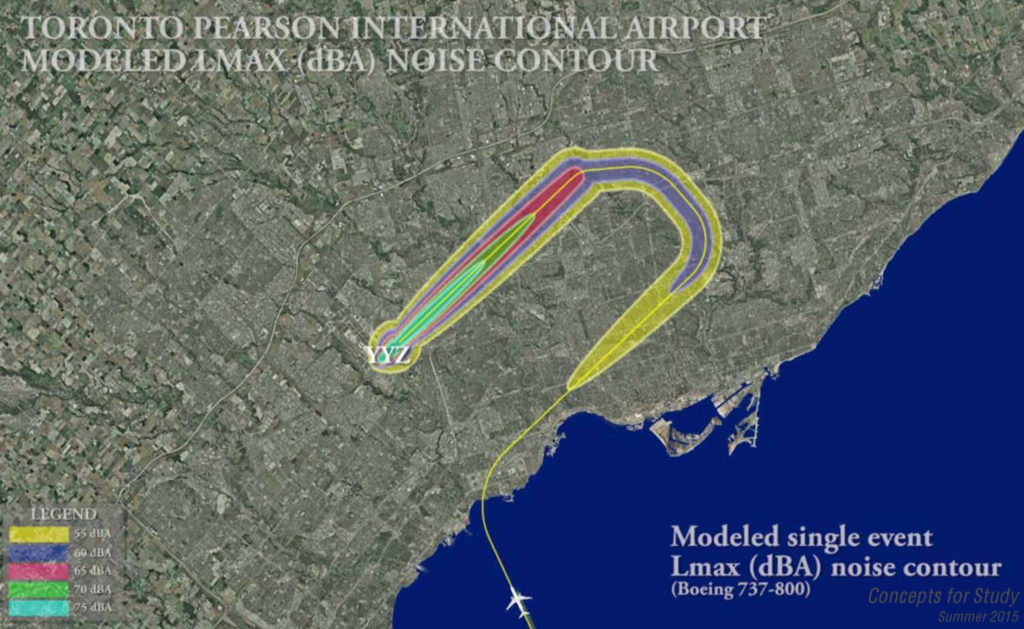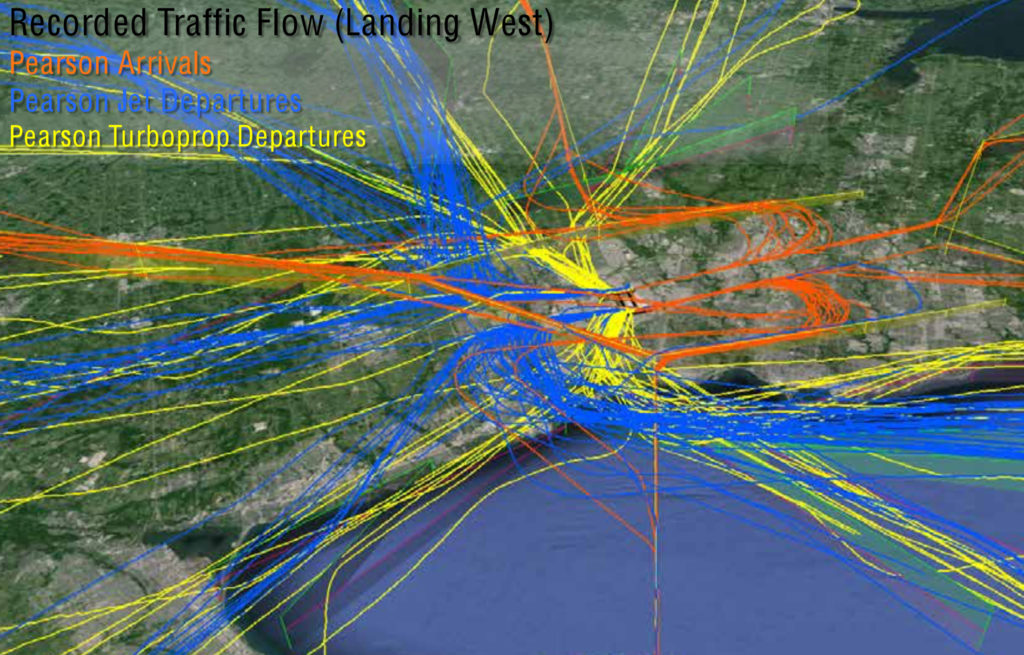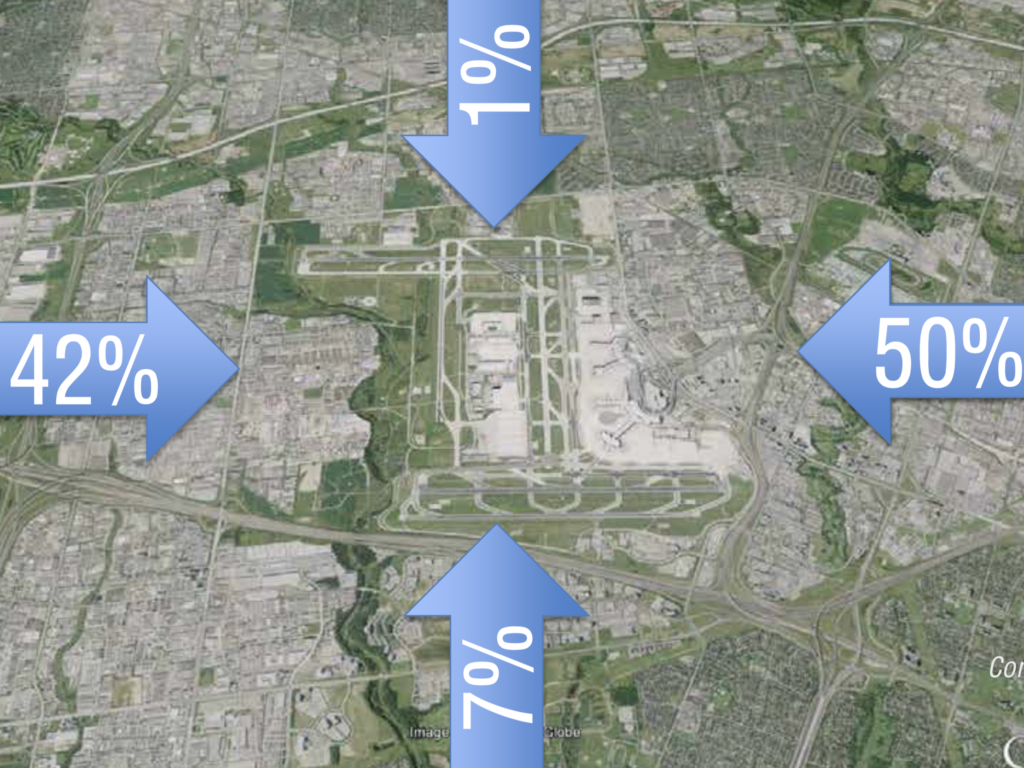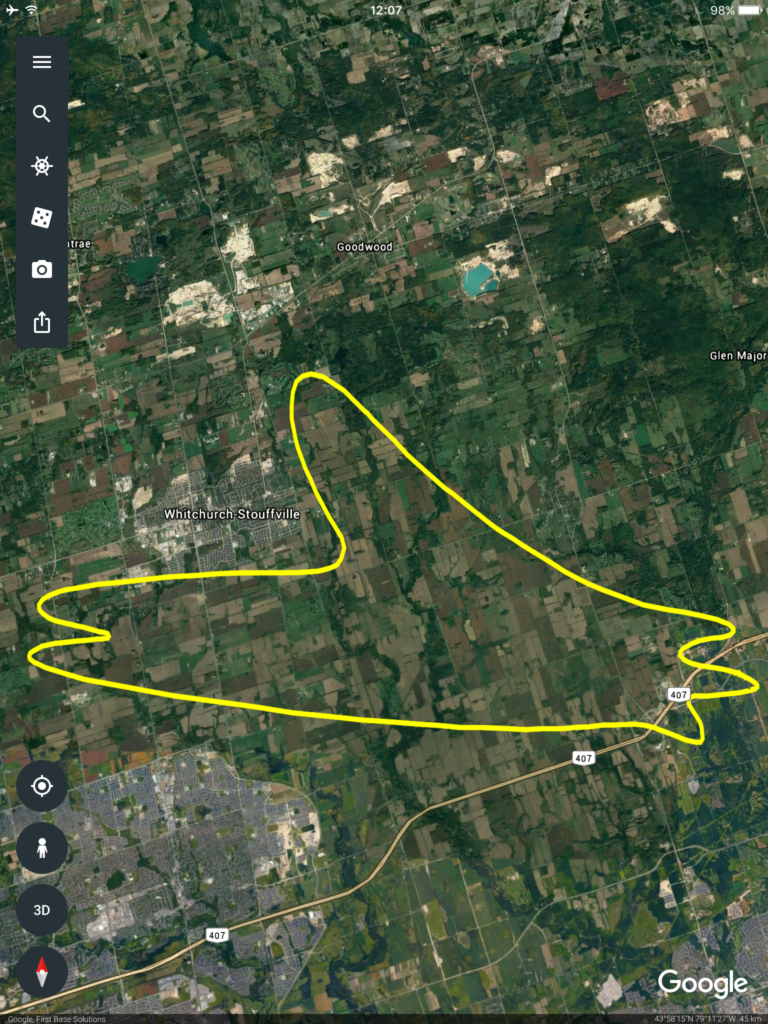
It’s been more than a year since federal Transportation Minister, the Honourable Marc Garneau, received the plea From Toronto’s mayor, John Tory , to please do something about the noise. The noise the Mayor of Toronto is referring to is the increasing noise created by the congestion of jets landing at Toronto Pearson International airport. “residents find little reprieve from the strong aircraft noise through the day and night,” said Tory in 2016.
Starting in 2012, the jet aircraft traffic flow, and the noise generated by these jets, became more concentrated over hundreds of thousands of Toronto residents living to the west ( as far as Oakville) and to the east ( as far as Richmond Hill) of Pearson airport.
The big question is, why? A number of the volunteers at the Friends of Pickering airport are commercial pilots, and their answer is that it is a combination of factors all driven by the increasing number and diversity of aircraft trying to use Pearson airport.
The growth in airside traffic ( aircraft landing or taking off) at Pearson in 2016 was 2.6%, well above a worldwide growth of 1.9% in jet traffic. 2017 growth appears even higher ( north of 3%?) but for the first time in memory Pearson has not published year end statistics on this growth. This is possibly a strategy to downplay the problem.

The use of new GPS procedures starting in 2012 was done to help control the increasing congestion at Pearson by allowing more precise spacing of aircraft on approach and departure. The unintended end result was concentrated flight paths over the same homes day in day out, amplifying the noise problem.
GPS Technology can also play a role in fixing the problem it created. Pearson could implement more complex GPS procedures call Required Navigation Performance ( RNP ). These are low noise, fuel saving, green house gas reducing, constant decent procedures that reduce noise on approach by being higher longer. The problem is that these do not work well in congested environments and a number of the smaller or older aircraft going into Pearson today do not have the equipment or trained aircrews able to follow the procedures.

Ironically the slower, smaller quieter aircraft are part of the problem as they require greater spacing from larger jets during take-offs and landings due to wake turbulence. As larger jets follow these slower aircraft they in turn are often forced to go further out over the city at low altitude, reduce their approach speeds and creating extra noise over our homes as they power up to maintain level flight.
If these smaller aircraft ( less than 10% of Pearsons traffic ) are instead diverted to a new regional airport in Pickering this will reduce noise pollution for hundreds of thousands of Canadians. An added benefit is that this will reduce the overall number of aircraft expected to strain Pearson’s airside capacity to the max within a decade. Pearson airport has limited options to expand as it is surrounded by commercial and residential neighborhoods.
As growth in the number and diversity of air traffic continues, the only real long term solution to congestion is to add runways. Pearson cannot add additional runways able to allow simultaneous approaches. The only practical solution to Pearsons congestion and jet noise problem is to build a new airport in Pickering.

One thought on “Solving Torontos Jet noise problem”
Comments are closed.